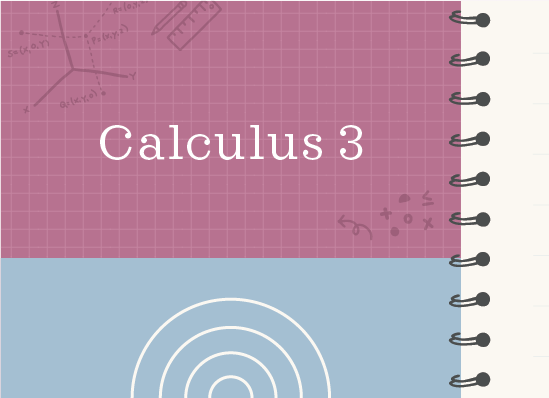Using a double integral to find the volume of an object
Finding volume using a double integral
We already know that we can use double integrals to find the volume below a function over some region ???R=[a,b]\times[c,d]???.
We use the double integral formula
???V=\int\int_Df(x,y)\ dA???
to find volume, where ???D??? represents the region over which we’re integrating, and ???f(x,y)??? is the curve below which we want to find volume.
Hi! I'm krista.
I create online courses to help you rock your math class. Read more.
We need to turn the double integral into an iterated integral by finding limits of integration for ???x??? and ???y???.
How to use a double integral to find the volume of a solid
Take the course
Want to learn more about Calculus 3? I have a step-by-step course for that. :)
Finding volume below the surface and above the region defined by three lines
Example
Find volume below the function over the region ???D???, where ???D??? is the triangle bounded by the lines ???y=1???, ???x=1???, and ???y=3-x???.
???z=2xy???
The first thing we’ll do is sketch the region ???D???. It’ll be easy if we solve for the intersection points of the three lines.
We’ll find the intersection of ???y=1??? and ???x=1???.
Pairing ???x=1??? with ???y=1???, the intersection point is ???(1,1)???.
We’ll find the intersection of ???y=1??? and ???y=3-x???.
???3-x=1???
???-x=-2???
???x=2???
Pairing ???x=2??? with ???y=1???, the intersection point is ???(2,1)???.
We’ll find the intersection of ???x=1??? and ???y=3-x???.
???y=3-x???
???y=3-1???
???y=2???
Pairing ???x=1??? with ???y=2???, the intersection point is ???(1,2)???.
If we plot these points and sketch the lines that connect them, we see the triangular region ???D???.
Since we only have one complex equation, ???y=3-x??? and it’s solved for ???y???, we’ll integrate with respect to ???y??? first, which means we’ll treat this as a Type I integral, and so the inner integral will have limits of integration for ???y???.
We need to turn the double integral into an iterated integral by finding limits of integration for x and y.
If we divide the triangular region ???D??? into vertical slices, the tops of those slices are defined by the line ???y=3-x???, and the bottoms are defined by ???y=1???. Looking at the sketch of region ???D???, we can see that ???x??? is defined on ???[1,2]???. Therefore, we’ll get
???V=\int\int_Df(x,y)\ dA???
???V=\int^2_1\int^{3-x}_12xy\ dy\ dx???
We’ll integrate first with respect to ???y???.
???V=\int^2_1xy^2\Big|^{y=3-x}_{y=1}\ dx???
???V=\int^2_1x(3-x)^2-x(1)^2\ dx???
???V=\int^2_1x\left(9-6x+x^2\right)-x\ dx???
???V=\int^2_19x-6x^2+x^3-x\ dx???
???V=\int^2_18x-6x^2+x^3\ dx???
Then we’ll integrate with respect to ???x???.
???V=4x^2-2x^3+\frac{1}{4}x^4\Big|^2_1???
???V=4(2)^2-2(2)^3+\frac{1}{4}(2)^4-\left[4(1)^2-2(1)^3+\frac{1}{4}(1)^4\right]???
???V=16-16+4-\left(4-2+\frac14\right)???
???V=2-\frac14???
???V=\frac74???
We can say that the volume under the curve ???z=2xy??? over the region ???D??? is ???7/4???.







